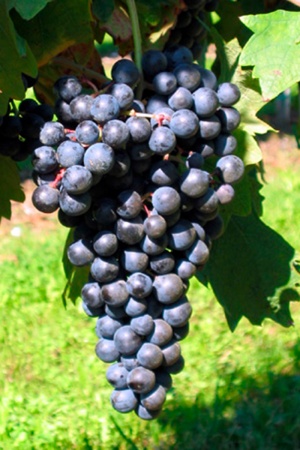Tempranillo becomes Spain's most widely planted grape, leapfrogging Airén

Tempranillo has become Spain’s most widely planted grape, overtaking Airén for the top spot.
This is according to the country’s Ministry for Agriculture, Fishery and Nutrition, which revealed data showing that Tempranillo now has a potential of 202,917ha, compared to Airen’s 200,084ha. Airén, a white wine grape, is mainly used for brandy production and rarely features on wine labels. Tempranillo, meanwhile, has long been Spain’s most planted red wine grape, and accounts for 42% of the country’s overall red grape plantings, and around a fifth (21%) of the total vineyard area.
Within Spain, Tempranillo also goes under various monikers, including Tinto Fino, Cencibel, Tinta del Pais, Tinta de Toro and Ull de Llebre, with the main growing regions including Castilla la Mancha (70,519 ha), Castilla y Léon (40,225 ha), and La Rioja (36,296 ha), followed by Extremadura (18,839 ha), the Basque Countries (12,132 ha), Navarra (8,797 ha) Valencia (5,458 ha), and Aragón (5,128 ha).
Small scale Tempranillo plantings are also found in Andalucía, the Balearic and Canary Islands, Cantabria, Catalunya, Galicia, Madrid, and Murcia. The area dedicated to Tempranillo production has grown significantly in the past 20 years, with the variety covering around 120,000 ha in 2000. Conversely, Airén has seen one of the largest declines across Spanish vineyards, having lost 138,551 ha of land in the same timeframe.
Despite the downward trend, Airén still covers about 21% of Spain’s land planted to vine and 45% of its surface dedicated to white varieties. Between them, Tempranillo and Airén account for around 41% of the country’s vineyard, calculated at 981,120 ha as of July 2021.
Since 2000 other red grape varieties to have seen considerable growth include Garnacha Tintorera, which has increased by 30,694ha, Syrah, up by 16,650ha, Cabernet Sauvignon, up by 12,740ha and Merlot up by 8,512 ha.
On the other hand, Monastrell has lost some 28,443ha compared to what it had in 2000, while Garnacha Tinta has lost around 27,726ha, although it remains Spain’s second most planted red skinned grape with 59,122ha. Bobal, Spain’s third most planted red skinned grape which is mostly grown in the Valencia region has seen plantings dropping by 37,338ha since 2000 to today’s 55,291ha.
Over half (52%) of Spain’s vineyard area is now dedicated to red grape production, and 48% to white. And of white grapes only Verdejo and Palomino – whose vineyard increased by 23,206 ha and 6,578 ha – enjoyed growth of any significance, reflecting a nationwide a trend that’s seeing Spain’s white wine grape vineyards shrinking.
